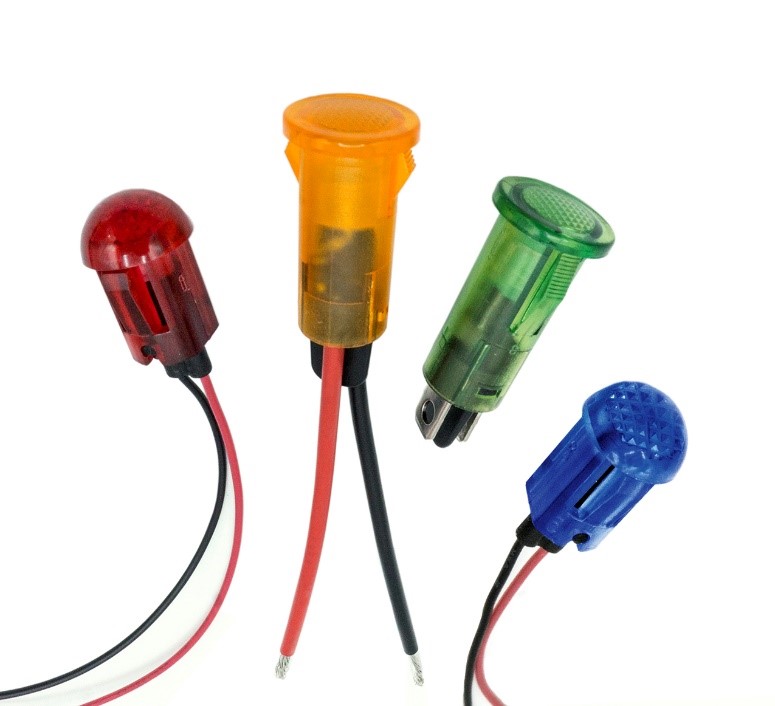By Warren Miller, contributing writer
Almost every electronic device you can buy that’s larger than a bread box (and many things that are smaller) incorporates LED lighting — from home appliances and children’s toys to dashboards in automobiles. Without LEDs, you might not ever know that you’re low on gas or that your smoke detector needs new batteries. Dialight recently announced its new 655 series of half-inch snap-in panel-mount indicators, providing an RoHS-compliant solution for a variety of LED-reliant applications.
With plug-and-play installation, the 655 series’ circuitry is built in and doesn’t require any additional resistors or components to meet 12-V or 24-V system compatibility. Solder joint connections allow the 655 series to function more efficiently and with a longer lifespan than its predecessors, while brass and nickel-plated terminals with a polycarbonate housing ensure high-performance levels at temperatures ranging from –20°C to 85°C.
Available in both dome and flat lenses and in red, green, yellow, and blue colors, the 655 series offers a wide range of options for panel-mount applications in everything from cars to medical equipment. The dome versions are available with wire leads, while the flat lenses are available with wire leads or brass nickel-plated 250 Faston terminals.

Photo courtesy of Dialight.
Given the pervasive use of LEDs, it probably doesn’t come as a surprise that there are a variety of types of LED panel-mount indicators made for specific applications. Medical and military applications can have much different requirements. Similarly, you can imagine the different requirements between server trays and marine applications. Sure, color, operating voltage, operating current, and intensity are obvious specifications that you need to look for, but how about certifications and ratings like UL 1598 (E56890), IP level, NEMA, or RoHS compliance?
Terminal types can also be important. Do you need screw-type or solder terminals, phosphor bronze or tin? Or, as offered by the 655 series, do you want to connect with wire leads or quick-connect terminals? Make sure that you consider all of your options when you are matching your LED to your application’s requirements.
Advertisement
Learn more about Electronic Products Magazine





